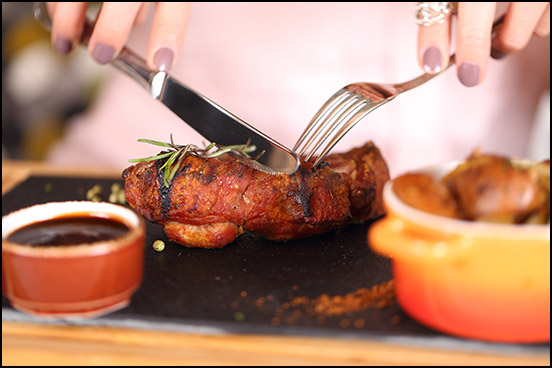
Domestic Beef Demand
As national beef month approaches, it is important to understand domestic beef demand.
Beef quality, consumer incomes, attention to beef in health articles in medical journals and the general media, and shifts in race composition of the U.S. population are key determinants affecting beef demand in the long term.
So concludes a newly released study commissioned by the Beef Checkoff Program called “Assessing Beef Demand Determinants.” The study summarizes the current knowledge of consumer demand for beef and identifies the best opportunities for the industry to influence demand positively.
Authors of the report include Glynn Tonsor, professor of livestock marketing at Kansas State University; Jayson Lusk, distinguished professor and head of the Department of Agricultural Economics at Purdue University; and Ted Schroeder, professor of livestock marketing at Kansas State University.
“The information gathered and analyzed for this comprehensive report is invaluable to the beef industry, in general, and to the Beef Checkoff Program, in particular,” said cow-calf producer Jackie Means, a member of the Cattlemen’s Beef Promotion & Research Board and chair of the Joint Evaluation Committee that commissioned the research for the checkoff. “Members of the Cattlemen’s Beef Board and directors of the Federation of State Beef Councils will be asked to use the information in this report in making decisions about how to invest checkoff dollars in Fiscal Year 2018 and beyond.”
Understanding beef demand
While recognizing that understanding beef demand and how to affect it is a daunting task, the report’s authors note that it also is critical to the industry’s long-term viability.
Given the state of the cattle industry’s supply, the understanding of beef demand vs. consumption is particularly critical.
One very important point in developing strategies to grow beef demand will be clarification of the role of per capita consumption in beef demand. Per capita consumption is, in effect, per capita availability of beef, the economists note. Demand, on the other hand, effectively refers to the quantity of beef that consumers will purchase at a given price, with all other factors held constant.
“Beef purchasing decisions have become less sensitive to retail beef prices. While prices will always matter, this reinforces the importance of industry focus on beef quality aspects of taste, appearance, convenience and freshness,” said Tonsor.
“In short, both beef supplies and cattle prices increased in 2017 relative to 2016 — an outcome only possible with demand growth,” the report notes. “A perpetual industry priority is to better understand and monitor beef demand, and to inform stakeholders because demand directly influences overall industry success.”
What is important to beef producers?
It has been a critical need for the industry to understand what beef demand is: Is it as strong today compared to the past? What has made it strong? Those kinds of basic questions have been of importance to the beef checkoff for a very long time. If beef demand is strong, then higher prices are being paid for beef than would otherwise be the case. That’s because higher prices being paid for beef in turn lead to higher prices for wholesale beef, higher fed-cattle and higher feeder-cattle prices, and most producers recognize that benefit in the form of higher cattle prices.
One of the things the research did was to update elasticity estimates, or how sensitive purchasing behavior is to prices. If the price goes up by one percent, how many fewer pounds are purchased? This study showed U.S. consumers are less sensitive to beef prices than they used to be. That does not mean price doesn’t matter, but the numbers showed that a one percent increase in price has a smaller impact on beef consumption than it used to.
“What I believe that signals is that beef quality issues such as taste, appearance and freshness have elevated over time,” said Tonsor.
“The tone and impact of ‘hot topics’ covered in the media and medical community can change notably over time,” continued Tonsor. “In past years, discussions around fat were a detriment to beef demand but more recently these discussions have enhanced beef demand. Similarly, this study shows how Atkins Diet discussions remain supportive of beef demand, but less so than a decade earlier.”
“Assessing Beef Demand Determinants” is available on MyBeefCheckoff.com.

Editor’s Note: Melissa Jackson is a trade media manager for the Cattlemen’s Beef Board. This article was condensed from the original release.






